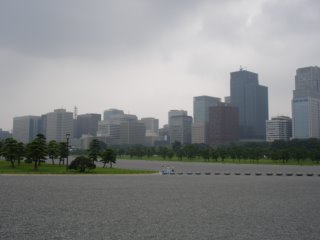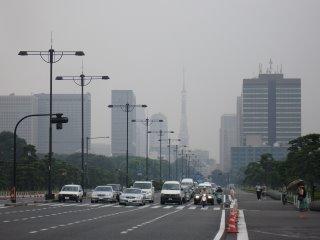
Tokyo is like Stoke On Trent. Not because they both have a fondness for pies and pottery, but because both are made up of many different towns that, like drops of rain on a window pane, have slowly dribbled into one another.
And in the same way as Stoke itself makes up a rather small portion of Stoke-on-Trent, "Tokyo" too makes up a small part of the Tokyo Megalopolis.
I think the similarities end there, though.
This is Tokyo, Tokyo. Proper Tokyo. Historical Tokyo. Not one of the many other cities (Shinjuku, Shibuya etc) which, as outsiders, we more readily associate with the capital
This is the business district - like Canary Wharf or The City. It’s an area often described as “Marunouchi. “Maru” meaning “within” and “no uchi” meaning “the circle”.
Traditionally, this area was within the confines of the Imperial Palace. This is where the bureaucrats, businessmen and scholars plied their trade and indeed the Palace still sits at its heart.
Nowadays, “marunouchi” still has connotations of status. It’s not only a descriptor of a geographical location, but also a word which denotes highbrow commerce, prestige, refinement and other assorted regal qualities. Buses round here all have the word plastered on their sides, as do the buildings. It’s a label to lend your brand gravitas.
Here we can see the Marunouchi skyline from the grounds beside the Imperial Palace. You’ll notice the Tokyo TV Tower, the closest thing the Japanese have to a national landmark.

1 comment:
I have to correct one thing.
Imperial Palace has nothing to do with why the area is called Marunouchi (inner circle).
"Maru" is derived from the shape of the moat of Edo (the name of Tokyo until 1889) Castle. Imperial Palace has relocated from Kyoto about the same period. Most of castle buildings are lost because of big fires, big eathquakes, and bombing.
Post a Comment